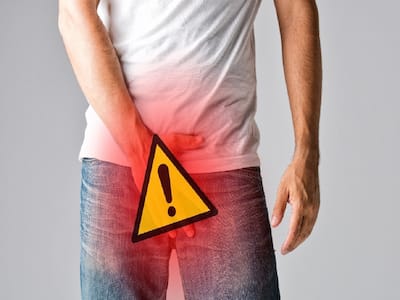Don’t Miss Out on the Latest Updates.
Subscribe to Our Newsletter Today!
Chafing And Jock Itch Are Common Problems Faced By Men In Summer: Tips To Avoid These Irritants

Most men have to deal with the dual problems of chafing and jock itch during the hot and humid summer months. Know how to avoid this problem.
Summers can be extremely nasty on the skin, especially for men who have an active lifestyle. While most people experience basic skin irritations, like acne, sun burns or boils and breakouts due to heat, chafing and Jock Itch are by far one of the most common yet serious skin condition affecting men, particularly during summer.
CHAFING AND INTENSE DISCOMFORT IN NIPPLES, THIGHS AND GROIN
Chafing is mostly characterized by friction when there is skin-to-skin contact, like in the groin area, or inner thigh area and arm pits. In case of obese men or athletes and runners, it can also happen on other places like nipples, where clothing can aggressively rub against skin. This is generally due to the inflammation caused by friction in these areas, which can manifest as mild reddening or rashes, with little discomfort. Additionally, hairy skin especially on the inner thighs and groin are, is more prone to chafing during summer, as more sweat is produced, and the salty remains of dried sweat can get deposited on hair follicles, further aiding to irritation and inflammation of the hair follicles (called folliculitis) leading to chafing. Although mildly uncomfortable at first, if ignored, chafing can lead to infections from bacteria, fungus or yeast.
JOCK ITCH CAN TURN INTO A FULL-BLOWN FUNGAL INFECTION
Jock itch, another form of skin irritation caused due to a fungal infection of the skin in the groin, inner thigh or buttock area. It is a type of ringworm that is much more common among men as moisture can get trapped between the scrotum and thigh area easily, and this fungus likes to prosper in warm and moist areas of the body. A jock itch usually shows up as rashes or chafing, with patches that maybe red, raised and scaly around the edges and can ooze fluid in some cases. When ignored, it can quickly transform into a full blown fungal infection, causing jock itch.
Also Read
EASY TIPS TO AVOID THESE ISSUES
Some of the most common tips to avoid chafing, and chances of getting jock itch, are as mentioned below:
Avoid tight fitting clothes, especially undergarments
Wearing tight fitting clothes can irritate the skin as it adds to the friction between the skin surface and the fabric. Further, tight fitting clothes also lead to heavier sweat deposition on the skin surface. Wearing tight clothing for prolonged periods also causes to trap moisture against skin and create an optimal environment for fungus to grow. Loose clothes allow for free movement of the skin allowing it the space to breath, and the sweat to dry out faster. Opting for comfortable fit undergarments not too tight, and not too loose either, that can help frictionless movement and thus helps prevent chafing.
Choosing sweat absorbent natural fabric
Choice of fabric is also important as synthetic or opaque/heavy fabric doesn't allow the skin to breath and traps in the moisture and sweat. Over a prolonged period, this can cause irritation of the skin and produce friction in some regions, resulting in more skin irritation and chafing. Choose sweat-wicking fabrics such as cotton and linen for a comfortable and breathable fit.
Using anti-chafing gels/ barrier protection creams
Once the skin is inflamed or minor rashes appear, it is important to treat it immediately. If addressed at the right time, chafing can be reduced by using anti-chafing products such as skin gels and anti-chafing cream on chafe-prone areas such as the inner thighs, groin, armpits, etc. One can use silicon based anti-chafing cream that are proven to be effective in reducing chafing and offering long-lasting skin protection. The silicone-based gels form a water-resistant layer that repels sweat and reduces friction.
Keeping the area clean and dry
Keeping chafe-prone regions like the groin, inner thighs and armpits as cool and dry as possible to prevent chafing is an important personal hygiene practice. Wearing garments that are moisture-wicking and breathable can assist in reducing the amount of sweat or moisture that is otherwise trapped on the skin, especially after an active few hours outdoors or at the gym or after a long run etc.
See a doctor
Despite your best efforts, skin chafing may occur due to factors beyond your control. Inspect your skin for signs of infection on a regular basis, such as redness, blisters, lesions, abrasions, and wounds. If left untreated, chafing and rashes can develop into bacterial or fungal infections, necessitating additional medical attention. If you notice any changes in the colour of your skin, see a dermatologist straight away so you can take action before any significant infections take root.
While the tips listed above can help with chafing management and prevention, most of them will become ineffective if the chafing or rashes have spread widely. Chafing is an unpleasant reality that many people ignore, and it can drastically affect your daily activities and busy life. Both friction and humidity must be avoided in order to avoid getting rubbed raw. As a result, staying attentive and taking proactive steps to prevent it is best way to reduce chafing.
(This article is authored by Ms. Maharukh T Rustomjee, Chief Scientist and Managing Partner, Amaterasu Lifesciences LLP.)


